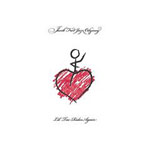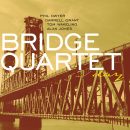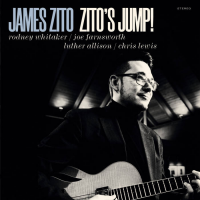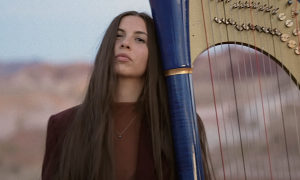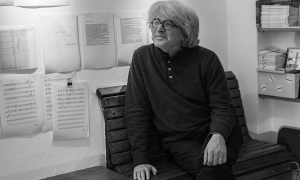Home » Jazz Articles » Interview » David Witham: A Sideman Steps Out
David Witham: A Sideman Steps Out
As a sideman, you have an assignment and do it. When it's your thing, it's just wide-open spaces, and you have to focus in.
 You may not know keyboardist David Witham's work, but the chances are actually pretty good that you've actually seen him play. As the musical director for jazz/pop guitar icon George Benson, the L.A. based Witham has put in plenty of road time, and he's also done side work with Chick Corea, k.d. lang, Randy and Michael Brecker, Ernie Watts and Jeff Gauthier.
You may not know keyboardist David Witham's work, but the chances are actually pretty good that you've actually seen him play. As the musical director for jazz/pop guitar icon George Benson, the L.A. based Witham has put in plenty of road time, and he's also done side work with Chick Corea, k.d. lang, Randy and Michael Brecker, Ernie Watts and Jeff Gauthier.It's great to be a working musician, and Witham never has to worry about being out of work. But until last year, his recorded output consisted of one album: On Line, a self-released effort recorded in 1988.
Two decades is not a short time between albums. And no matter how capable a musician is as a sideman, writing and performing music as a bandleader is, well, different. Witham's good enough a player to do any music—but what kind of music is "David Witham" music?
Judging from Witham's magnificent Spinning the Circle, released in 2007 on the Cryptogramophone label, "David Witham" is dense, vibrant, melodically accessible and rhythmically charged. The song titles ("Afrobeat," "Con Quien") suggest genre exercises, but Spinning the Circle is a deeply coherent album and its music—fiercely performed by Witham and former and current West Coasters like drummer Scott Amendola, percussionist Luis Conte and bassist Jay Anderson—sounds effortless.
There were more prominent jazz releases in the last year, but Spinning the Circle is as good as any of them. Best of all, while the CD's ear-pleasing from the first spin, its tunes sound better with repeated hearings, and its effervescent grooves and ear-seducing melodies are worthy of the deepest, most attentive listening.
- Spinning the Circle: Just Make a Record
- Individual Players: Old Friends That Happen to Be Great Musicians
- Great Engineering Can Make a Good Piano Sound Great—and Some Song Discussion
- More Songs and the Life of a Working Musician
Spinning the Circle: Just Make a Record
All About Jazz: I want to talk about your great recent CD Spinning the Circle, which was released last year on the Cryptogramophone label. This is music from a two-day session you did in December of 2006 and features drummer Scott Amendola, bassist Jay Anderson, percussionist Luis Conte, reedman Jon Crosse, and yourself. On some tracks, pedal and lap-steel guitarist Greg Leisz and guitarist Nels Cline also appear. This is your first new recording since, I think, your self-released On Line recording from back in 1998, on which Jay and Jon played as well.
This is a mixture of acoustic and electric music and all but two of the tunes are your compositions. The band configurations go from trio to sextet, if you don't count overdubs. The tunes vary but there's, I think, something innate to all of them—besides that the playing is magnificent throughout. The common thread is the hopefulness and optimism of your melodies: pieces like "The Circle," "Afrobeat" and "N.O. Rising" have a deep, non-cynical hopefulness that is really palpable, which isn't to say any of it is saccharine. I also don't mean to suggest that the music is without a melancholy side, because I hear that as well, even in something like "The Neon." The music is always spacious no matter how many voices are involved at any moment, and I love how the instruments are always used as needed—it's not like everyone has to be playing the whole time on a song.
I want to talk about individual songs, and the players, but first tell me—did you have any idea about what sort of an album you wanted to make, any intention? David Witham: Really, the main intention was to get a CD done [laughing]. Jeff [Gauthier] had offered me this deal with Crypto; I think that was in 2001. And it just sat on the backburner for all that time. Then 2006 rolled around and it was like, "holy moley—it's time to get crackin' here."
David Witham: Really, the main intention was to get a CD done [laughing]. Jeff [Gauthier] had offered me this deal with Crypto; I think that was in 2001. And it just sat on the backburner for all that time. Then 2006 rolled around and it was like, "holy moley—it's time to get crackin' here."
And then it took a year to get all these guys in the room at the same time! I wanted to do the record in January of that year, and we ended up doing it in December. Anyway, I had songs that I knew I wanted to do, or ideas that I had that I wanted to become songs. And that little extra time actually helped those ideas ferment and become something.
The goal was truly to make a record with live musicians, with my friends—guys who I knew would do a great job, even though I didn't know how they would play together. I knew how Jon and Jay would play together, because we've done stuff. I had played with Greg in many different contexts over the last twenty years, but never anything like this. And Nels is a fairly recent friend. I've known him for the last ten or twelve years. Well, maybe fifteen years. Same with Scott; I love his work, but I didn't know how it was going to be when we all got together.
So it was a little gamble, but my instinct told me it was going to be fine because they're all great guys, and great musicians. So the goal was just to do it; the project had just been sitting on my shoulder for quite some time. Sometimes you get a little blocked and you have to overcome some inertia, or even trepidation: that "who am I?" thing. I've worked with a lot of people, but it had been twenty years since I'd really made a record.
AAJ: Right. It's one thing to know who you are when you're playing with other people, and another thing entirely when you're making your own statement.
DW: Absolutely. That was a big question. And I kind of put that question to the side for a little while when I was working producing this community access television station show called "Portable Universe." Originally it was just a kind of venue to showcase groups I was working with—people who might have fallen through the cracks. And eventually I ran out of bands. So I just started bringing people in who I had encountered along the way and so I met all these wonderful artists and creative people. And I sort of became—well, not a voyeur, but an observer of artists and the creative process. How these people get this stuff out into the world.
And I think I must have needed to do that. You know, as a sideman, you have an assignment and do it. When it's your thing, it's just wide-open spaces, and you have to focus in. So watching people do that helped me a lot over the course of five years there. Then it just became obvious: "Okay, it's time to go. Who am I going to use? Okay, I like these guys." And you just start getting into the logistics of it. And like I said, it took a year. Everyone's busy.
And when you start planning, there's a sort of momentum that builds with that. You've set a deadline, so you have to finish the songs and get all the ideas together. Sometimes it happens and sometimes it doesn't. With this record, I think it happened nicely. And you don't really know that until you're done mixing and mastering, but I could tell from the moment we got in there that it was going to be a good two days [laughing].
AAJ: When everybody showed up for the first day of recording, had any of them seen the music?
DW: Jay and Scott and I had rehearsed the day before at my house. Jon lives out in Ohi, which is about 100 miles north of me in Long Beach, and you know what the traffic is like here. He was late. So we got probably an hour with Jon, and probably a three-hour rehearsal with Jay and Scott. Luis hadn't heard any of, and Nels hadn't either. I actually do recording sessions all the at the place we did the record, and Greg lives just a few blocks away from there, so I went over to his place one night and gave him a CD of some demos and the music, just to get it in his ear.
I kind of let Greg make the decision of what songs he'd want to play on. I did originally have the idea that he would play on "Who Knows," but he thought that would work better as a trio tune. And that was good advice; that worked out just swell. I could hear Greg playing on that, but that song was written by a guitarist [Mike Miller] and it's nice to play a guitarist's song with no guitar in it.
AAJ: Yeah, sometimes it's nice to have the instrument of composition missing from the composition.
DW: Well, that one is a weird one because Mike plays the guitar like a pianist. His voicings are very influenced by Keith Jarrett and, I think, a lot of other piano players. And, you know, I always wanted to play with Mike because I liked his music so much—I love his songs. And he and I did play a little bit, and it was fun and I really got a kick out of it. But I realized that I was in the way! He didn't need a pianist in the band. So [laughing] I said, "Well, I'm just going to admire this from afar. We can be friends, and we'll collaborate somehow."
AAJ: Well, it takes a clear mind to recognize these things.
DW: Well [laughing], I don't know about that. I don't know how clear I am at this point.
class="f-right">
Individual Players: Old Friends That Happen to Be Great Musicians
AAJ: Let's talk some more about the musicians on this record. Jay Anderson and Jon Crosse have played with you before, and you have an especially long history with Jay—who has a really deep and audible rapport with you musically on this record. What do these two add to the overall whole?
DW: I'll start with Jon. He's somebody I haven't gotten to see a lot in the last years. I met him in 1982 or 1983; we were both working for Paul Anka, of all people. At that point Paul had a band that was headed up by Michel Colombier, the great arranger. And I have to say, for a Vegas group, this band sounded like Weather Report. He had this trio of brothers from Mexico City, the Toussaint brothers—[keyboardist] Eugenio Toussaint. They had a band at that time with Jon Crosse called SacbÈ—¯Ãƒ'—¿Ãƒ'—½. Anyway, it was very attractive, and I was getting called to play third keyboard for this band—which, as Luis Conte said, was like playing one maraca all night [laughing] in terms of a musical challenge. Luis was in the band too, as a matter of fact.
Anyway, that's where I met Crosse. He played so great, so melodically and beautifully, and he's just a totally open-minded person. He doesn't want to put anything in a bag; he's all about the music. He's a wonderful teacher, and he plays every instrument known to man—all the woodwinds, and he used to play a lot of brass, too. He was Toni Tennille's musical director, and he would play trombone as well as all those woodwinds and trumpet. I was just blown away by this guy. He was doing creative stuff—he made a beautiful record of lullabies for children [Lullabies Go Jazz (Jazz Cat Records, 1985)] with [pianist] Clare Fischer and Luis. I just heard what he did with these lullabies, these great arrangements, and I thought, "This is a guy I've just got to keep playing with."
So he'd put these groups together and we did get to play a little bit. We didn't do a lot of gigs, but we were involved with Paul Anka there for a couple years, and that's how our relationship grew. So he played on my record On Line and did a great job on that, of course. Time went by, and we would see each other sometimes, but not a lot. But I always knew that if I made another record, I would want Jon to play on it. And he's always ready for anything; he shows up with a big smile on his face and when he's confronted with musical challenges, he just embraces them. You can hear the results, too; he's just an amazing musician.
And Jay Anderson—what can I say? He was there from the very, very beginning of my interest in jazz music and improvisation going all the way back to when I was a teenager. He's a year older than I am, and in high school I would cut class—I had an instruments class, and I was supposed to have been learning the trumpet—and go over to Long Beach State and check out the big-band rehearsals. Jay was the bassist in that big band, and we just struck it up and started playing. I had my first trio gig with him and [drummer] Paul Kreibich down in a place in Newport Beach. We played every Tuesday night for a couple of years, and that was a big deal—the point of departure for me, really.
And Jay and I became fast friends. I really watched his career explode after he got out of college. I played on his senior recital and shortly after that, he got called by Woody Herman and started his whole adventure. We've stayed really close; I'd say we're best friends. I was best man at his wedding. I can't think of enough great things to say about this guy. He's not only a great musician—he's a great human being, and I've always been tickled pink to see all his successes. I was really sad when he moved to New York, because I knew I wouldn't be doing that at that point, and I knew he'd find success there, and stay—which he has.
So any time I'm doing something musically, I want to find a way to get Jay in on it. He plays bass, he's got great sense as a producer, and now as an engineer—he's starting to record some really good records up at his studio up in New Paltz. I love his compositions, too; I think he's a great composer. A composer in the true sense. Jazz guys write tunes sometimes that are, you know, melodies with some chord changes.
AAJ: Right, a quarter of a page.
DW: Yeah. And Jay's music might take up a quarter of a page, too, but he really knows as a composer how to work a motif—he can take a kernel of information and end up with a beautiful piece of music in the end. So I knew I wanted him to contribute to the thing, and I think his song "Momentum" is a really great piece. A great free, open thing.
And again, it's a very simple device—it's a tone row and by the end of the piece you've heard ever iteration of those twelve notes. It's like [singing the phrase] the first note, then the first and second notes, then the first, second and third notes—a very simple device. But it works wonderfully if you keep it in a rubato context.
AAJ: That song really needs to be in there at that point on the record, too. It's a nice little detour into something just a little odder.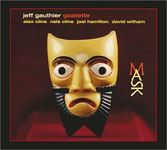 DW: Well, I'm a little schiz-ey that way. I like a lot of different kinds of music and a lot of different kinds of things. I want those things to be represented, too. I think if I did a whole record of songs like that—I don't know if it would work so well.
DW: Well, I'm a little schiz-ey that way. I like a lot of different kinds of music and a lot of different kinds of things. I want those things to be represented, too. I think if I did a whole record of songs like that—I don't know if it would work so well.
And, you know, the nature of the—well, I almost don't want to say "the music business," because this is [laughing] such a periphery of the music business, but I think the niche-ification of everything, and the assumption that people only listen to one kind of thing, is really detrimental to society. And conversely, you've got this information age and everything is out there—it's just got its own channel. You can't listen to that one deejay who will take you on that journey; you've got to be your own deejay and be a little more intrepid in finding all these other kinds of things. I do think they're all out there, so the new challenge is how to find them.
So, anyway, I just wanted to have a lot of different moods on this record. And you were saying that was a good spot for that song, and it was Jeff [Gauthier] who sequenced this record. And I'm really glad he did, because I liked the sequence I had done when he came back with the sequence that is on the record. And I pretty much railed against his sequence until I put it on, and then I knew, "Oh yeah, this is how it has to happen." It has a nice arc, and it's totally thanks to Jeff.
AAJ: Tell me more about Scott Amendola and Luis Conte. Scott drums on every tune and Luis plays percussion on most of them. You must have wanted some depth of percussive sound for these sessions.
DW: Oh, yeah. Scott's a new friend; I met him through Nels, from Nels' trio, the Nels Cline Singers. I heard him and I thought, "Yeah, this guy plays really good—he's very open-minded." Then it turned out that we already had a connection, because he grew up with George Benson's son Marcus in Englewood, New Jersey. He asked me if I knew Marcus, who was George's personal assistant on the road, and of course I saw him every day when we were out working. So that was a wonderful six-degrees-of-separation deal, and I actually got to hook the two of them back up in Perugia at the [Umbria Jazz] Festival.
So, yeah, Scott plays great, he's very open-minded, and he's done a lot of different kinds of music. When we got to play, we did the Jeff Gauthier fiftieth birthday celebration and we recreated some of the [Herbie Hancock] Mwandishi music and Scott played on that, and I thought, "Oh yeah—this is the guy I'm going to be using when I make this record."
Of course [laughing], that was 2003 or something like that. So we played a couple of times after that.
Again, Luis is a longtime friend and we have a lot of musical associations. I met him back in the early 1980s, in the Paul Anka days. We'd always be sitting around bemoaning working with Paul Anka for whatever reason [laughing], saying, "We've got to get off the road—we're going to start a band!" And we did! Luis got off the gig and started working with Madonna and doing all this stuff, and he was staying home. So we started a group and played at the Baked Potato every Monday night for a while, and did a record for Denon, La Cocina Caliente (1987), kind of a live-to-two-track thing. We had three records with that band; it was a great kind of Latin-jazz thing, and it had some of my nut influences in there that he really liked. It was such a great education—I learned so much about Afro-Cuban music at that point. He really set me on the right path about the good guys to listen to, and he always had the cool bootlegs and all that stuff.
I mean we were born on the same day, November 16th. We're both left-handed. There's this bond, and we became friends from the minute we met. I love him and his family dearly.
Actually, I didn't know that I was going to use percussion on the record. But once I knew I was going to put "The Circle" on there—I mean, I wrote that song for Luis, for a project that never happened. Once I decided to put the song on the record, I knew he had to play on it, and he lives really close to the studio as well.
And when I knew I was going to do an Afrobeat tune [the aptly titled "Afrobeat"], I knew that we had to have another pair of hands in the studio just to get those rhythms going. So of course it had to be Luis; unless he's completely unavailable, he's my go-to guy for anything like that.
So he played on "Afrobeat," "The Circle," and the New Orleans one ["N.O. Rising"] as well—he just put a little tambourine on that one to just glue it all together. AAJ: I am partial to a little tambourine.
AAJ: I am partial to a little tambourine.
DW: Better than a little cowbell.
AAJ: Then there are Greg and Nels sort of guesting—Greg on three tunes, Nels on two. Obviously you wanted to add some more voices in there.
DW: Yes. Greg is, again, a guy I've known since the early eighties. We used to play with a great songwriter who lives down in southern Orange County named Richard Stekol and his band the Seclusions.
I just knew this guy was going somewhere. We'd play other gigs down there—we played in this weird pseudo-soul band called the Breeze Brothers. Somebody said that band played everybody from Hank Williams to Ornette Coleman [laughing]. Then all of a sudden, k.d. [lang] called him, and he was off and runnin.' He's a guy with a unique voice, and we always stay in touch.
And I love his sound—he's a sound guy. So I thought, "How am I going to use this on a jazz record?" Then he started playing with Bill [Frisell], and it was like he was off in another direction. But he's really just being Greg. Bill heard him and just wanted to add him to that—I don't know if I'd call it deliberate Americana—sound.
AAJ: Right, that Frisell thing.
DW: Yeah. It really tickled me when he played with Greg, because I love Bill Frisell. I know him just a little bit through Mike Miller. So anyway, here's Greg, the famous guy, and he's carving out a little time for his pal Dave [laughing].
So Jay wanted him to play on "Momentum." And he heard it and didn't really know what Jay wanted him to play—he thought it just wouldn't work on the steel. But Jay said, "No, no, just play some textures. Just do your thing." And that worked out just great. You know, I don't have to tell Greg much [laughing]. I just let him do his thing.
AAJ: That must be a nice feeling when the tape starts rolling, digital or otherwise.
DW: Yeah, when the disc starts spinning. He's just got a wonderful, warm sound. I knew I wanted him on "Con Quien," the last song on the disc. I'd originally played that song with a kind of steel-guitarish synthesizer part—I called it my "Frisell sound" at the time. But that synth wasn't what I wanted; I had to have the real deal.
And what are you going to say about Nels? He's the man of the moment. Again, I played with him back in the early eighties. Charlie Haden called me to play with his Liberation Music Orchestra; we played the rededication of MacArthur Park in L.A. Boy, that was a frightening gig for me—here I was playing with Charlie for the first time. And Nels was there. It was the Ballad of the Fallen material, and Nels was playing acoustic guitar. The pickups back then weren't that happening, and you could barely hear him. I remember we played "We Shall Overcome" as a blues, and I thought that was really cool.
So I met Nels and played with him then, but didn't see him much after that until I met Jeff Gauthier and [Nels Cline twin brother and drummer] Alex Cline and [bassist] Eric Von Essen. Actually, I knew Eric, but he introduced me to Jeff and Alex, and subsequently Nels. I started playing with him in Jeff's group and started hearing him doing all those myriads of other things. Again, I knew I had to have this guy play on this record somehow. It just seemed like a logical thing.
We both play with a certain number of effects and do sonic, texturey kind of stuff. I found that we could coexist in a sonic space very easily. That can get very cloudy, depending on who's doing it at any given moment. I knew I wanted him to bring that sonic platter to a few of the songs—to "The Neon" in particular. Sort of like a guy actually remixing something on the fly.
"Afrobeat" was a tune we cut without Nels in the studio; Nels overdubbed on it a week or two later. That's a dangerous thing in a jazz situation; you want it to all happen naturally. But I told him before we spun the disc, so to say, "Here are the tonal centers. Just stay out of the way when it goes rubato and just do something—play a single-note pattern, fill it up with textures." And what you hear is his first take. And it was as close to live as it would make happen. Nels had been out of town, so couldn't make that date originally.
So it was really cool. It was exciting to hear. What he played was perfect. He has great musical sensibilities. He loves so many different kinds of music and he has a very, very good sense of space and timing. It's tasty! What can you say—he's got good taste.
class="f-right">
Great Engineering Can Make a Good Piano Sound Great—and Some Song Discussion
AAJ: You co-produced this with Jeff Gauthier, and I must also praise Rich Breen's engineering and mixing to the skies—it's a gorgeous sounding record with a really crystalline, shimmering sound that goes so well with the music. The acoustic piano work couldn't have been done on a Kawai Digital?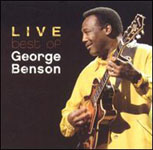 DW: No, it was the acoustic piano at Castle Oaks. The digital piano is just controller to play the Rhodes-ish kind of sounds that happen on the record. No—[laughing] Kawai make a good digital piano, but it's not quite that great. You know, I don't know how to delicately say this, but in further praise to Rich Breen, the piano at Castle Oaks isn't my favorite piano. I'll leave it at that. It's a very earthy instrument. But Rich really made it shine; he knew how to make that instrument sound good.
DW: No, it was the acoustic piano at Castle Oaks. The digital piano is just controller to play the Rhodes-ish kind of sounds that happen on the record. No—[laughing] Kawai make a good digital piano, but it's not quite that great. You know, I don't know how to delicately say this, but in further praise to Rich Breen, the piano at Castle Oaks isn't my favorite piano. I'll leave it at that. It's a very earthy instrument. But Rich really made it shine; he knew how to make that instrument sound good.
AAJ: Yeah, you want to go buy it.
DW: Well, you might not say that if you saw that thing [laughing].
You know, I work at Castle Oaks a lot, doing commercial-type work. So I play that piano all the time and I knew it was capable of sounding decent—even though you might be a little dubious if you put a microscope to it. So I was comfortable with its action, and knew how to get a sound out of it that I wanted. Then you get a guy like Rich Breen, with golden ears and perfect mic-placement skills, and it works out great.
AAJ: "The Neon" starts this one off, and it's a sort of lightly-propulsive space jazz built around those two-note vampy phrases. The playing is great, including some fine solo tenor from Jon. There's a sort of light density here—it's not ominous but there is a melancholy to the melody, sort of like Herbie's tune "Vein Melter." It's the perfect album opener: any thoughts?
DW: It's sort of coming out of the whole DJ, drum 'n bass mentality. Because we use live musicians, it ends up sounding more like what you said—more of a spacier jazz kind of thing. And I wanted to do that drum 'n bass thing with humans—people playing it live. I wanted that spontaneity to carry it.
Of course, the really great DJs are very creative; they really keep the flow, and it's really an amazing thing. I like that up-tempo kind of approach. It sounds like jazz to me, for some reason. I had been exploring those kinds of rhythms and approaches to songs as a result of a collaboration with my friend Matt Cohn. He's a childhood buddy, and a very creative guy—he's a keyboard player himself. He was in a pop band called Berlin back in the 1980s. Anyway, he's really creative, and when I started that television show, I called him. I thought he'd be a good input for the show. He had this idea about neon signs in L.A. Then there would be this guy called Neon Hunter, and it would be this noir idea. We'd look at all these signs, and there'd be some kind of up-tempo track underneath.
So we took a 165-mile drive around L.A. and would shoot three to five seconds of these obscure, weird, odd, neon signs glowing in the night. And that's how "Neon Hunter" was born. We made about eleven of these little movies over a few years. Matt really drew me into the whole thing. So we made these little movies and ended up having an association here in L.A. with a place called the Museum of Neon Art, where we actually exhibited some of these movies for a while. We really struck up a great association with them, and met a lot of great artists. Anyway, these little films all have this kind of driving, drum 'n bass kind of track, and that's where "The Neon" on this record came from.
Oh, you can check that out at www.neonhunter.com. There are excerpts of the movies up online. The tune was kind of an experiment. I had the groove in mind, and I had the chordal pattern in mind. I had the idea that the pattern would change keys. But I really didn't know how this one would end up sounding. After we got it done, Jeff and I took it home and did our DJ thing on it—cutting it up and messing around with stuff. And then Nels came in that day for the overdubs.
That's "The Neon." It's driving around at night, seeing some crazy stuff. That's part of the musician's life. We work at night, so we're out there in the wee hours. And we see all kinds of nutty stuff.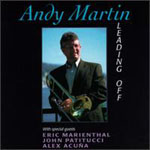 AAJ: You've talked about "Afrobeat" some, and it is the longest piece here.
AAJ: You've talked about "Afrobeat" some, and it is the longest piece here.
DW: Yeah [laughing]. The "Jazz Odyssey," as they say, like in the Spinal Tap movie.
AAJ: I really like the improv opening, with all the little noises, effects, loops, sproinks and skronks, before Jon's soprano comes in.
DW: Yeah. I could have probably called that "Intro to Afrobeat," and maybe confused the issue a little bit less. I could have made them separate tracks that just joined together. Scott's way into the kalimbas with the delays—all of that. So I thought that could just start out the whole deal, do a little free improv. I had these weird drumsticks with small felt beaters on the back ends of them. That's how I got that kind of hammered-dulcimer sound inside the piano.
Again, that song had a very loose concept. Those kinds of rubato chords were an idea; the bass line to the song was an idea. And of course I had the idea of having an afrobeat rhythm. I wanted something that started and stopped kind of abruptly. And that was really all I knew. So we took that rhythm and just did some stuff over the top. That tune ended up having a really great arc to it. That stuff can get a little bogged-down sometimes, but that didn't happen here. Another great, great part of this tune is Scott. You know, some drummers don't know how to play those kinds of rhythms.
AAJ: Oh, Scott Amendola knows that stuff.
DW: Does he know that stuff! I said [laughing], "Do you know anything about afrobeat?" He just looked at me, like, "Didn't you know?" Oh, man. He knows that stuff. And Luis came in, and that put it right in the pocket.
AAJ: It really benefits from the rhythms, and then the absence of rhythm. The moment that the band first drops into that groove time—on a dime, from that rubato beginning—is thrilling.
DW: Well, you never know how some things are going to come out. I'm just glad that people dig it, because I do. We got a little lightning in a jar, and you can only hope that that will happen.
class="f-right">
More Songs and the Life of a Working Musician
AAJ: "Light and Life" is just piano, bass and kit. It's the piece where I think your rapport with Jay is most evident. This one has an almost Keith Jarrett-like quality, I think.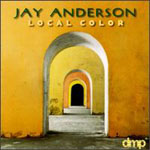 DW: Yeah, or Paul Bley. Paul's maybe not that sweetly melodic—well, he can be, but his stuff is usually a little drier than that.
DW: Yeah, or Paul Bley. Paul's maybe not that sweetly melodic—well, he can be, but his stuff is usually a little drier than that.
AAJ:This one is as much sonata as ballad. It feels like there's a real story in this one.
DW: That's an interesting way to put it. That's an improvisation that I wrote down, and it's inspired by an artist here in San Pedro named Candice Gawne. She's a wonderful light sculptress, and that's really what this piece is primarily about. She's also a great painter, and she does some other stuff too, but she makes these plasma globes that look like undersea life—anemones and jellyfish. She pumps them full of plasma glass, and you can vary the color based on the amount of current that is going through the thing. She's created these amazing undersea worlds of light. So her work is about light and life, and that's where the title came from.
I met her through my association with the Museum of Neon Art. Matt Cohn and I did a profile on her; we went to her loft studio in San Pedro and got to see her stuff. She had it all set up. We went over and interviewed her and I was totally taken with her art.
And I knew I wanted to do a kind of melodic, rubato thing on the record. And I had this thing that I had just played—I really had no idea what I had played, so I had to go back and write the thing down so I could recreate the vibe. And that's where it becomes a kind of sonata, like you say: I had something very ephemeral that happened in the moment and I had to write it down after the fact so I could give a sheet of music to Jay and Scott. Well, Scott really just felt it out, because originally I was going to do it as a duet with Jay alone. But Scott said, "Well, let me play along too." I trusted his judgment.
As far as the thing with Jay goes, that rapport you mentioned—you know, we don't play much these days! I don't think we'd played in ten years before we did this record. It's never an issue; there has been so much spent between us that it's going to be golden. I don't have to worry about him, that's for sure.
I just knew that song was going to be good. The sketch that I had of this improvisation was—well, my manuscript wasn't that easy to read, let's put it that way, and I don't use the electronic programs yet. So I said, "Well, just listen to it," and I played it through. He said, "Okay, okay," and he made a couple marks on his page. And he followed me around. Or I followed him around. And that was the great thing about that one: We had a lot of give-and-take. We didn't quite know the form; I knew we had to play it through once, but didn't know how many times through would be enough. It turned out to be twice through with some improv, then go back to the melody and finish the thing off.
That was the first day of recording, and it was the end of the day. We'd had dinner, and we said, "Okay, let's just do this." And it was a first take. We tried to do it again, and it didn't quite feel the same. It was just old friends.
AAJ: It took you a long time to assemble these musicians for the recording. Any chance of playing this stuff live?
DW: Well, there is always a chance. It might take some serendipity. I can't see playing this stuff without these guys there, that's for sure. Jay gets into town every now and again. It would have to be timed just right—just draw a line in the sand and hope people can make the gig some months down the road. I hope so. A festival gig would be some good incentive. It's hard to get Jay to come to California to do a couple of club gigs [laughing]. It's hard to get a lasso around all these guys. AAJ: So what is your week-to-week life like as a musician? I know you're a member of violinist Jeff Gauthier's Goatette; you play with Ernie Watts; you still play with George Benson. How often are you playing professionally?
AAJ: So what is your week-to-week life like as a musician? I know you're a member of violinist Jeff Gauthier's Goatette; you play with Ernie Watts; you still play with George Benson. How often are you playing professionally?
DW: Every day. The stuff with George—that's been going on for since 1989. George works a little less than he used to, but he still works three or four months out of the year. So that usually comprises some work in the spring and then a long summer tour; he doesn't like to work in the winter.
I've been doing work with a Broadway show here at a theatre called the Pantages at Hollywood and Vine. It's a wonderful place; it was a vaudeville house at the turn of the last century. The first Academy Awards were held there. I'm doing a show called Wicked.
AAJ: Oh, right. A huge success. It's been playing here in Chicago forever.
DW: So that's an extended run. The demand is high. That's my musical reality—eight shows a week to do, and it's a hard. It's a hard show. It's one of the biggest challenges I've ever had as a musician. It's not your typical rhythm-section Broadway musical. I did The Lion King a couple years ago, and it was a different kind of animal, no pun intended. Wicked is, as the guys in the orchestra say, more of an opera thing, or chambery. It's very nimble. It's all rubato, even when the drums are playing. So it's moving all over the place in relation to the dialogue every night. The minute you look away from the conductor, you're sunk!
AAJ: And if it's Saturday, you have to do it again in a few hours?
DW: Yeah. It was really hard! Actually, I would go away and do some shows with George and Al Jarreau, and when I came back, it would actually feel better. Sometimes it's good to take a little break away from something like that—to go play above ground, so to speak.
Selected Discography
David Witham, Spinning the Circle (Cryptogramophone, 2007)
Jeff Gauthier Goatette, One and the Same (Cryptogramophone, 2006)
George Benson, Best of George Benson Live (GRP, 2005)
Jeff Gauthier Goatette, Mask (Cryptogramophone, 2001)
Andy Martin, Leading Off (Resurgent, 1995)
Jay Anderson, Local Color (DMP, 1994)
Jeff Gauthier, Internal Memo (Nine Winds, 1994)
Bill Liston, Bill Liston and Friends (Liston Music, 1993)
Dave Witham, On Line (Witham Section Music, 1988
Photo Credit
Paul Viapiano
Tags
PREVIOUS / NEXT
Support All About Jazz
 All About Jazz has been a pillar of jazz since 1995, championing it as an art form and, more importantly, supporting the musicians who make it. Our enduring commitment has made "AAJ" one of the most culturally important websites of its kind, read by hundreds of thousands of fans, musicians and industry figures every month.
All About Jazz has been a pillar of jazz since 1995, championing it as an art form and, more importantly, supporting the musicians who make it. Our enduring commitment has made "AAJ" one of the most culturally important websites of its kind, read by hundreds of thousands of fans, musicians and industry figures every month.



